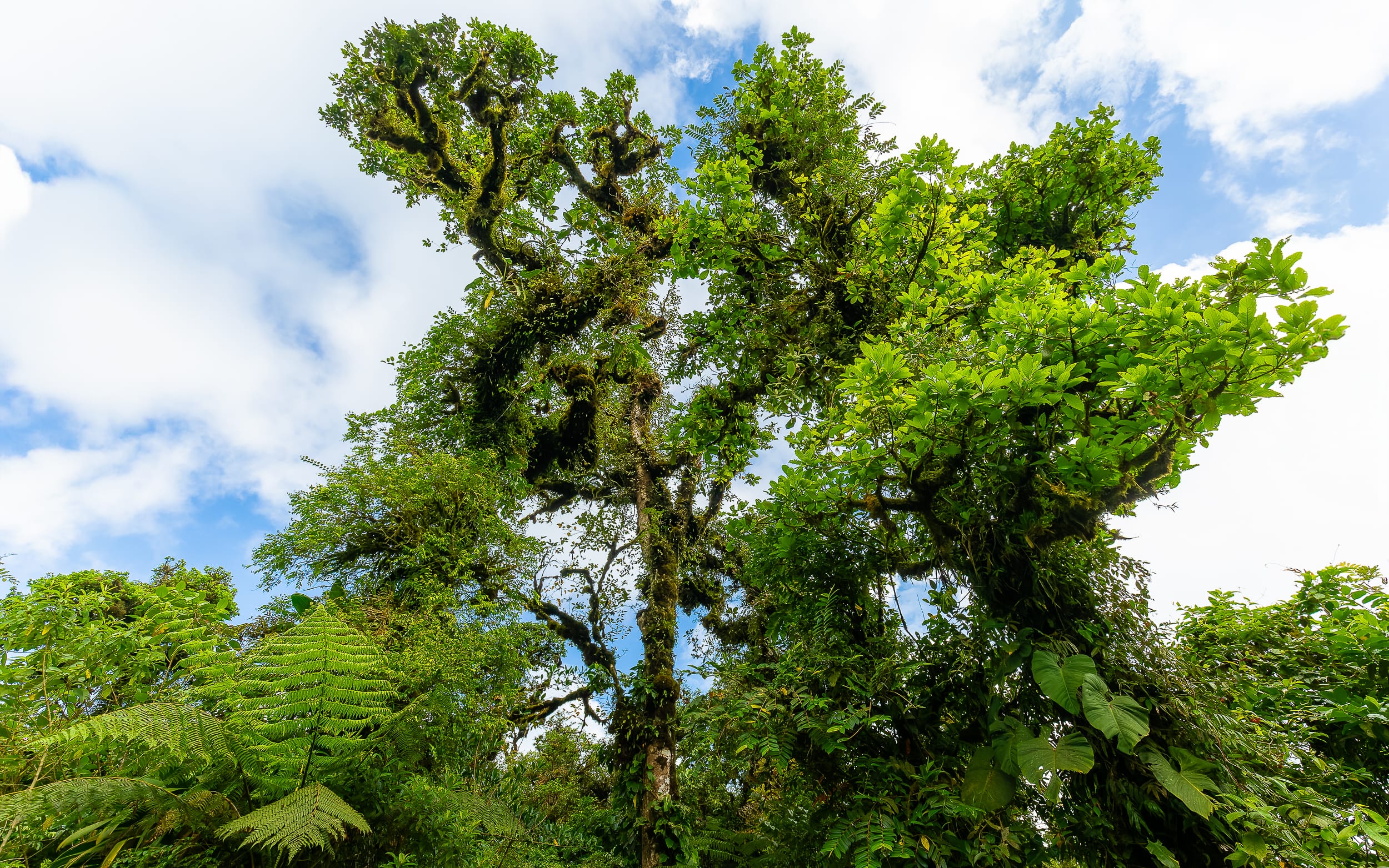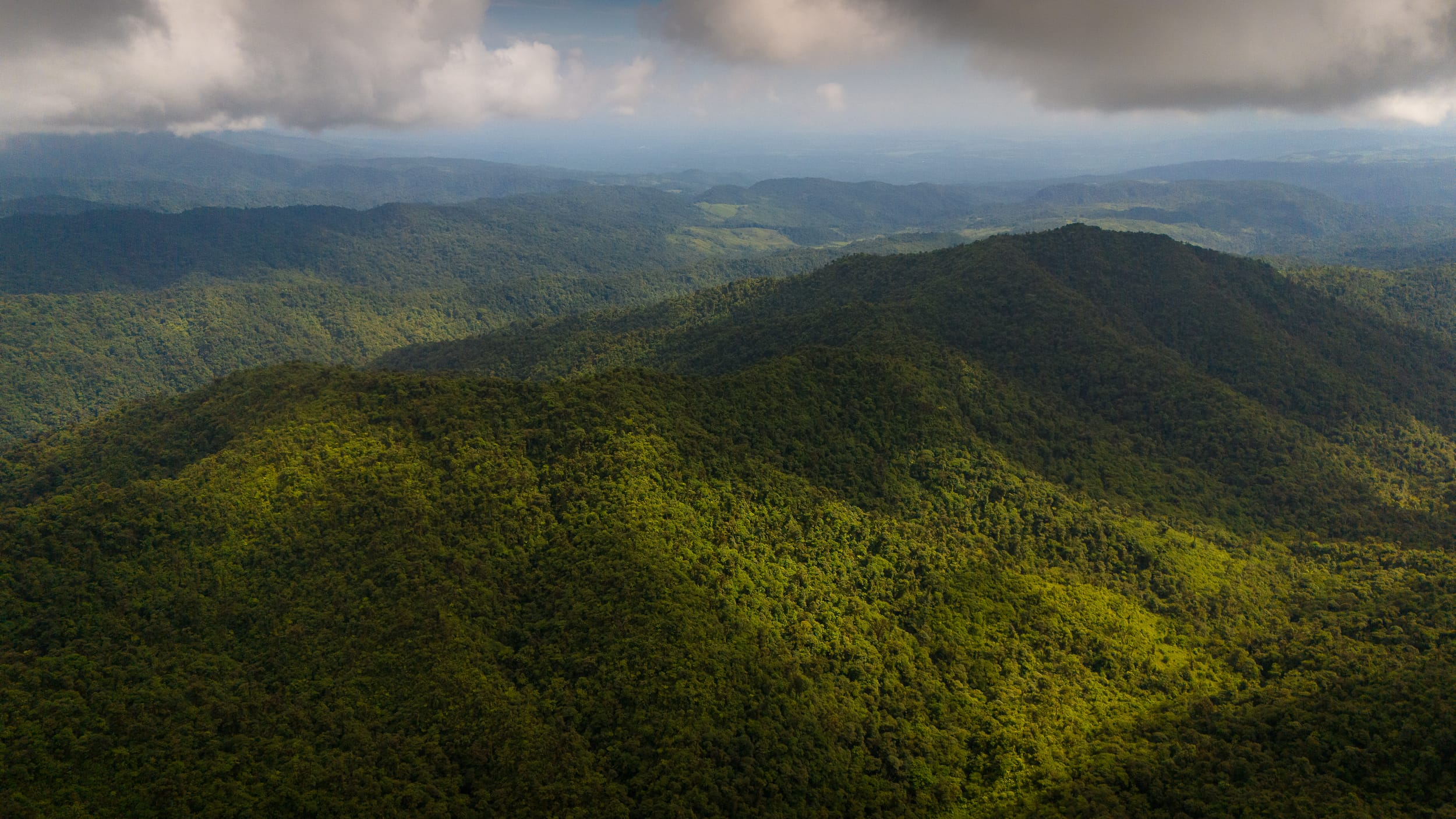What Protects the CR Ecosystems
The area protected by Ecosystems CR Located in the canton of San Ramón de Alajuela, it is an area of great ecological value that protects a wide variety of ecosystems, especially rainforests and cloud forests, typical of the Atlantic slope of Costa Rica. This area is known for its high biological diversity and its key role in the conservation of both flora and fauna species.

Types of Protected Forests
In the Bajo La Paz region in San Ramón de Alajuela, Costa Rica, there is mainly premontane rainforest and in some areas, cloud forest due to its proximity to the Tilarán mountain range and its moderate altitude. These types of forests are characteristic of areas with high rainfall, which is typical in this area, and play an important role in biodiversity and the regulation of the water cycle in the region.
Premontane rainforest is characteristic of the lower altitude areas of Bajo La Paz. This type of forest develops in humid climates, with high rainfall throughout the year, allowing for dense vegetation. Trees in this type of forest often reach considerable heights and form a closed canopy that gives rise to an understory full of ferns, palms, and other plants that thrive in shady, high humidity conditions.
In some higher areas of Bajo La Paz, there are cloud forests, which are a type of humid forest where clouds and fog are present for much of the year. This microclimate allows for a great diversity of epiphytic species, such as mosses, ferns, bromeliads, and orchids, which cover the trunks and branches of the trees. Cloud forests are important ecosystems because they capture humidity from the environment, acting as natural regulators of water in the region.
Biodiversity in our protected area
The area protected by Ecosystems CR is one of the biodiversity hotspots in Costa Rica. It is home to a large number of plant, animal and fungal species, many of which are endemic and some of which are threatened or endangered.
Flora
The reserve has a great diversity of tree species, such as aguacatillos, tree ferns, and oaks. Many of the plants in the reserve are used by local fauna as sources of food and shelter.
Due to the high humidity, the reserve's cloud forest is home to a large number of epiphytes (plants that grow on other plants without parasitizing them), such as orchids and bromeliads. The diversity of orchids is particularly impressive, with many species that are rare and difficult to find elsewhere.
Fauna
The reserve is home to a variety of mammals, from large predators to small rodents. Notable mammals include the jaguar, the puma, the tigrillo, the tapir centroamericano and the white-faced monkey. These mammals find in the reserve a protected habitat and a connection with other natural areas, which facilitates their survival.
The reserve is a paradise for bird watchers, with more than 200 species of birds recorded, including the resplendent quetzal, one of the most emblematic birds of Costa Rica. You can also find species such as the bell bird and several species of hummingbirds and toucans.
The anfibios are particularly abundant, thanks to the humid conditions of the forest. The reserve is home to several species of frogs, some of them endemic, such as the red-eyed tree frog and the glass frog. The reptiles, such as lizards and snakes, also inhabit these forests, contributing to the biodiversity of the area.
The biodiversity of insects in the reserve is immense. beetles, butterflies and ants play a key role in pollination, decomposition of organic matter and regulation of other insects. In addition, fungus They play an important role in decomposition processes and soil health.
Importance of protecting these forests
The area protected by Ecosystems CR, not only acts as a refuge for countless species, but is also essential for the water conservation in the region. Cloud forests capture moisture from the environment and feed watersheds, ensuring a constant supply of clean water for both ecosystems and human communities.
In addition, the area protected by Ecosystems CR is part of the Biological Corridor of the Central Volcanic Mountain Range-Tilarán, which connects different protected areas and allows the movement of species along the mountain range. This is crucial for the conservation of wildlife, as it provides them with the necessary space to search for food, reproduce and maintain genetic diversity.
The protection of these forests is vital for the climate change mitigation and the biodiversity conservation in Costa Rica. Being a carbon sink and a refuge for a large number of species, the reserve contributes to national and international efforts to confront the climate crisis and preserve natural wealth for future generations.

